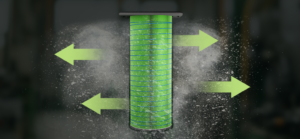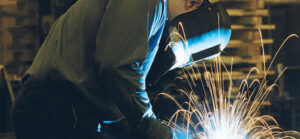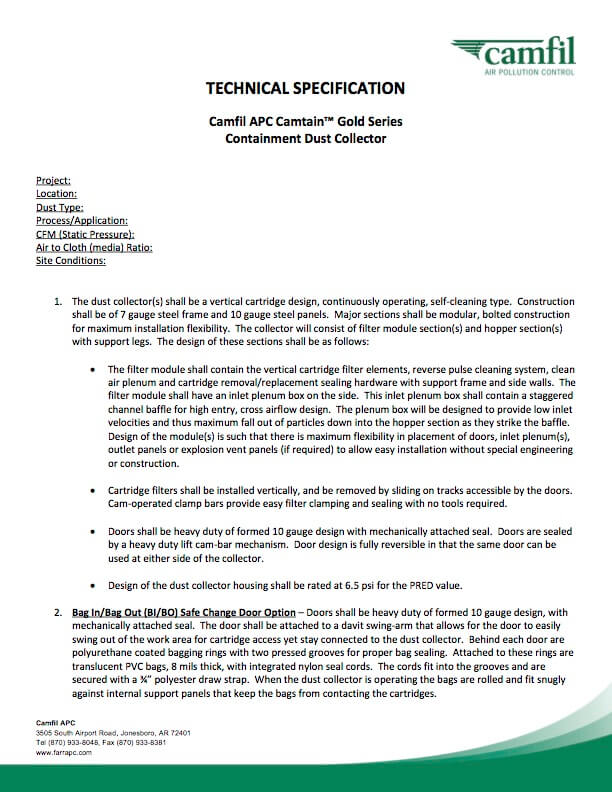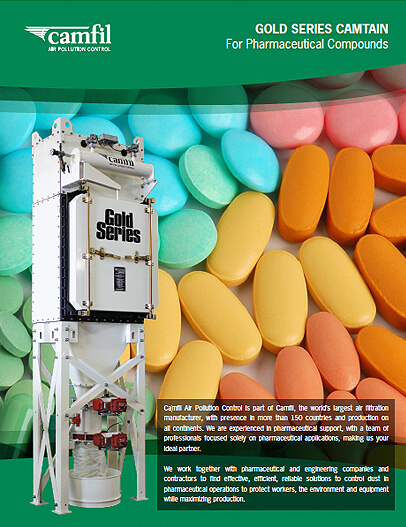Metal dust collection plays a crucial role in the safety of manufacturing operations that generate metal dust. This dust can pose health risks to workers by introducing metallic compounds into the environment as airborne particles.
Furthermore, when metal dust accumulates in the air or on surfaces and floors, it can become a combustible dust explosion hazard. To ensure safe working environments and mitigate risk, it’s essential to adhere to mandated best practices provided by government agencies regarding metal dust collection.
The Occupational Safety and Health Administration (OSHA) and the National Fire Protection Association (NFPA) have established standards to address these risks. They help prevent and limit explosions associated with combustible dust, assess and identify hazardous dust in manufacturing environments, and assist organizations with selecting equipment such as metal dust collection systems to control hazardous metal dust particles.
OSHA guidelines for combustible metal dust collection
OSHA standards include provisions that address combustible dust hazards. The table below outlines some of the combustible dusts defined by OSHA.
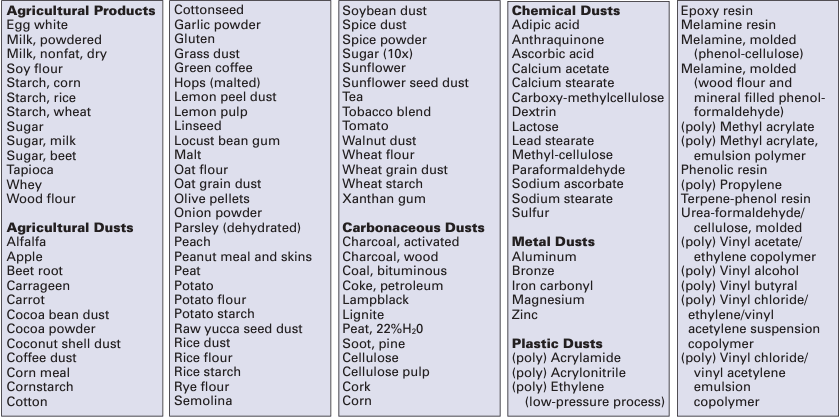
In its fact sheet on Hazard Alert: Combustible Dust Explosions, OSHA defines how dust contributes to explosions, the associated risks within various industries, and preventive measures. Among its recommendations for dust control are using proper dust collection systems and filters to minimize the release of dust from process equipment and ventilation systems.
The OHSA Combustible Dust National Emphasis Program outlines policies and procedures for inspecting workplaces that generate or handle combustible dust including metal dust types like aluminum, magnesium and certain forms of iron dust.
These OSHA inspections play a crucial role in proactively preventing workplace hazards in facilities where dust, especially metal dust, has a higher likelihood of causing fires, deflagrations and explosion hazards. These inspections can be initiated voluntarily or may result from complaints, accidents or other significant incidents.
NFPA standards for combustible metal dust safety
The OSHA Combustible Dust National Emphasis Program references the following NFPA standards for facilities that produce combustible dust. Over the past few years, NFPA has amended its combustible dust standards to enhance safety measures.
NFPA 652-2019: Fundamentals of Combustible Dust
These standards require companies to complete a Dust Hazard Analysis to verify that dust generated in their operations is not combustible. This determination is based on testing or published data regarding the materials used. Companies handling combustible metal dust must identify appropriate controls such as dust collection systems to control emissions and prevent hazards.
The assessment should ideally be conducted by an independent professional engineer or an in-house engineer with a thorough understanding of dust-related complexities. Collaboration with a dust collector supplier can ensure accurate results.
Results from the analysis should be kept on file so that they are accessible upon request by the local fire marshal or other authority having jurisdiction. This dust hazard analysis mandate was implemented in 2020.
NFPA 654-2020: Prevention of Fire and Dust Explosions from the Manufacturing, Processing and Handling of Combustible Solids
Aligning with NFPA 652, this standard provides guidelines on designing systems and safety measures for handling combustible particulate solids, including metal dust.
NFPA 484-2019: Combustible Metals
NFPA 484 covers all metals that have the potential for combustion or explosion. It outlines procedures to determine a metal’s combustibility. It offers guidelines for producing, processing, finishing, recycling, storing and using metals that are potentially combustible or explosive. The table below provides a list of potentially explosive metals.
NFPA 69: Standard on Explosion Prevention Systems
This standard reviews options and outlines requirements for installing systems for preventing and controlling explosions in areas containing flammable dust, gases and other mixtures.
New consolidated NFPA standard
Every company dealing with combustible metals and alloys should stay up to date with the latest standards. Currently, NFPA is in the final stages of developing a new standard, NFPA 660, which will consolidate all information related to combustible dust compliance into a single document. This new standard will combine and replace several existing standards, including:
- NFPA 61-2020: Prevention of Fires and Dust Explosions in Agricultural and Food Processing Facilities
- NFPA 484-2022: Combustible Metals
- NFPA 652-2019: Fundamentals of Combustible Dust
- NFPA 654-2020: Prevention of Fire and Dust Explosions from the Manufacturing, Processing, and Handling of Combustible Particulate Solids
- NFPA 655-2017 Standard for the Prevention of Sulfur Fires and Explosions
- NFPA 664-2020 Standard for the Prevention of Fires and Explosions in Wood Processing and Woodworking Facilities
A preliminary draft of this consolidated standard is available on the NFPA website. The new combustible dust standard is anticipated for release in the fall of 2024. Click here to get a downloadable infographic of the new Standard 660.

How NFPA classifies dust
Certain metal dusts are more prone to combustion, particularly alkali metals and transition metals like aluminum, magnesium, titanium and zirconium. Other metal dusts from materials such as carbon and stainless steel can also pose hazards. Companies engaged in processing or finishing operations that generate combustible metal dust must determine whether a metal is combustible. Operations that most often generate dusts are machining, sawing, grinding, buffing and polishing.
The NFPA classifies dust according to its explosiveness using a parameter known as the Kst value. The Kst value of a dust cloud, denoted in bar-m/s, indicates its potential for deflagration. The tables below provide information on dust explosion classifications and the explosibility characteristics of common metals.

Metal dust collection systems

Plant managers and operators face the crucial task of selecting the most effective dust collection system to capture metal dust generated during production processes. This decision is vital for minimizing risks, safeguarding employee well-being, protecting equipment, enhancing operational efficiency, and complying with governmental regulations.
Two commonly used systems for capturing metalworking dust are cartridge-style dust collectors and wet scrubbers. Each of these systems boasts its own distinct technologies, advantages and disadvantages. The following table offers a comprehensive comparison of these dust collection systems.
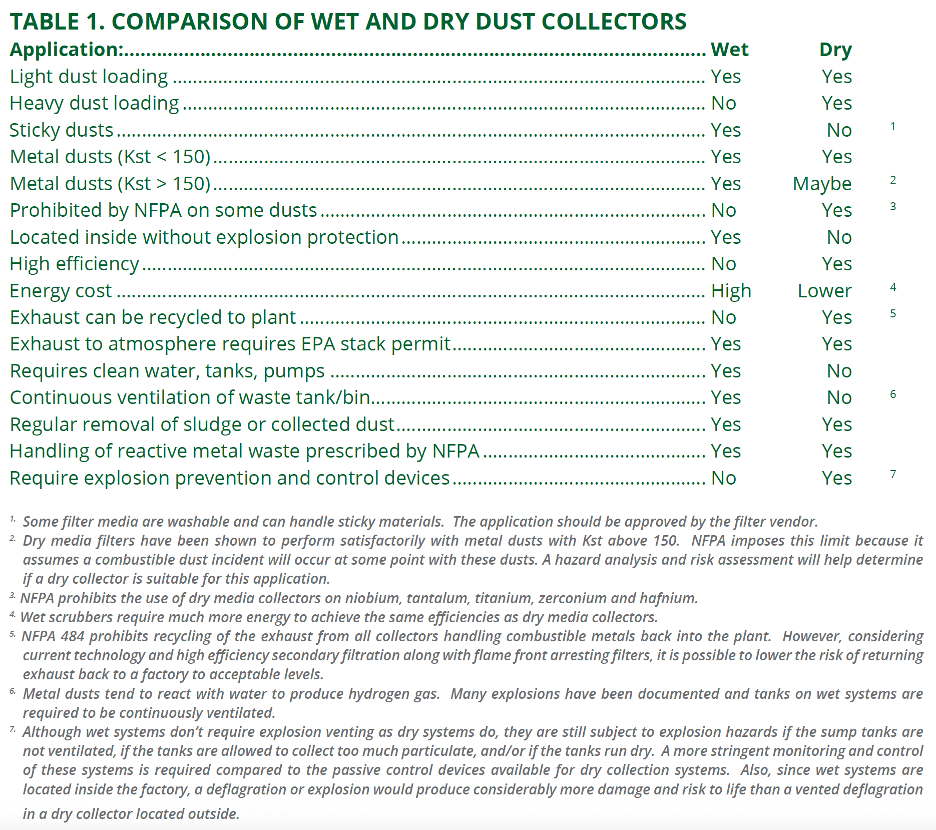
Dust collectors equipped with high-efficiency media filter cartridges are widely used in industrial applications because they are very efficient in extracting extremely fine dust particles.
For situations requiring cleanroom-grade efficiencies to satisfy very low OSHA personal exposure limits, a HEPA-grade secondary filter can be incorporated into the dust collection system. Camfil APC’s Gold Series industrial dust collectors are engineered to provide the highest protection against dust explosions in accordance with NFPA standards.
In cases involving metal dust with elevated Kst values, wet scrubbers are the preferred choice due to their ability to handle the volatility of such materials. Metals like titanium and magnesium, which exhibit a high explosion value (>300), pose challenges for traditional cartridge-style dust collectors.
Wet scrubbers neutralize metal and keep it nonreactive in water. The Vortex wet scrubber is highly effective in removing metal and flammable dust from the air stream by using a combination of water swirling and disintegration principles. As a result, wet scrubbers stand as the safest solution for managing flammable and combustible materials.
NFPA 484 requirements for wet scrubbers and cartridge-style dust collectors are summarized in the tables below.

Trust the metal dust collection system professionals
Choosing the right metal dust collection system is a complex task. Place your trust in the expertise of equipment manufacturers and suppliers who understand metal explosion risks and the necessary control measures.
Manufacturers should rigorously test their equipment to ensure compliance with NFPA standards, and a reputable supplier should provide a written guarantee of performance stating that selected equipment will satisfy applicable emissions requirements.
Contact one of our air filter experts to find the best metal dust collection solution for your application. For more information about Camfil, visit us here.
If you need help selecting the right option for your application, contact one of our experts here.
 Americas
Americas 




